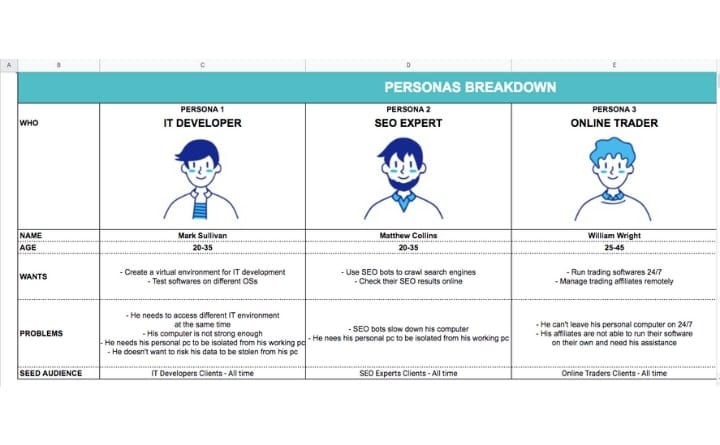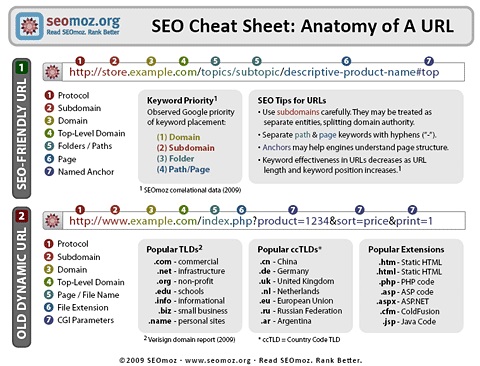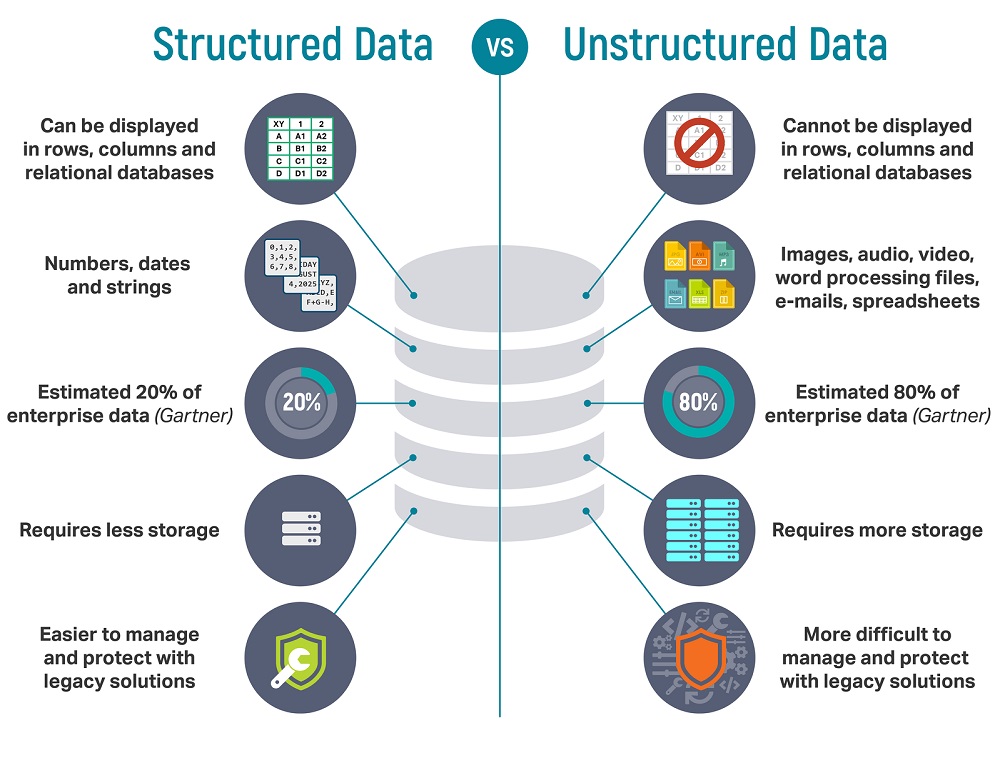One of the most exciting parts of working in SEO is the industry’s ever-changing nature. Google’s capacity for reading and ranking pages grows more advanced with every year. Tactics that brought great results a few months ago can quickly become yesterday’s news, and for site owners, it’s a constant battle to keep learning and refining strategies.
It’s all too easy to get lost in the storm of your day-to-day operations. Too many business leaders gain a sound knowledge of SEO and then fail to keep themselves updated. Instead, the same furrows are plowed and effective modern-day tactics are overlooked. Here are seven common SEO mistakes that your business can’t afford to keep making any longer.

1. Do Customer Research
Personalization is a major key to attracting customers and building a loyal customer base. It’s essential to know what your customers like, their interests, financial status, hobbies, family size, and aspirations. This should naturally feed into your content offering. What words do your customers use? What problems do they need solving? How do they like to consume content? How often do they part with their hard-earned cash?

Building in-depth customer personas is often overlooked these days in the race to find insights from raw data alone. But personas should be one of the foundations of your business strategy and influence the kind of content you’re putting out, its tone and regularity.
Let’s say you’re running a startup and need a few business solutions. You’d find ones that match your needs, such as a phone system for small business. It’s the same with planning and creating content – match it to customer needs and wants. The more personal you can make your content, the more your brand will seem like the solution they’ve been looking for.
2. Use Keyword Groups
We all know that SEO changes over time. Google’s machine-learning capabilities improve from month to month, and tactics that worked six months ago can quickly become old hat. It’s essential to keep a close eye on new SEO trends and Google updates and apply them as soon as possible.
Keyword stuffing is definitely out these days, and even the use of three or four primary keywords can have little impact on a page’s ranking. 2021-style Google is clever enough to read the intent of your content, rather than just picking out keyword volume and ranking on those alone.
The best-performing content today tends to be built around keyword groups. Where possible, these would contain a list of keywords much longer than any you might have used before. Instead of using just three or four keywords on multiple occasions, aim to use as many relevant keywords as possible, and don’t focus on reusing them. They should have a range in volume from high to low in order to attract customers from different parts of the sales funnel.

3. Don’t Neglect the Nitty-Gritty
Optimized title tags, URLs, H-tags, alt-text and anchor text are a few areas that often get overlooked once a site starts ranking and bringing in customers. Title tags should fit within 70 characters so as not to get snipped on the SERPs (search engine ranking pages). They should contain a primary keyword, your brand, and all follow the same structure – it simply looks more professional and can become a way of people recognizing your brand.

URLs and H1 tags should contain the same primary keyword as your title tag. Image alt text should contain relevant keywords, and anchor text be as close to the referred-to page URL as possible. These are all small factors that take little time to implement, and when optimized across a whole site, their SEO impact will be felt. All too often, businesses will neglect the nitty-gritty in pursuit of the next big thing – for example, forgetting all about their online fax facility and only using video conferencing to communicate. In reality, both have their place. This happens in SEO too – managers become fixated with Google’s latest updates, and lose sight of the ‘old school’ stuff that still works just fine!
4. Remember the Importance of Site Speed
In the rush to make websites look fabulous and contain different types of content, site speed can be easily overlooked. It’s a definite ranking factor for Google, and if your site takes three seconds to load, your bounce rate will increase by 32%. Yep, internet users have miniscule attention spans and no patience, but that’s just life!
Improving your site speed is rarely an overnight fix. There could be a multitude of factors involved, including huge images, non-optimized CSS or Javascript code, or too many redirects. It’s best to factor these in when your site is in its infancy, or at least run a technical audit once a month and prioritize any fixes.
Don’t forget to optimize your site for mobile devices, too. Nearly 70% of searches came from mobile in 2020, and loading speed is a major factor in keeping users on your site. If complicated page layouts are affecting your mobile load speed, consider using accelerated mobile pages (AMP) or even a parallel mobile site.

5. Organize Your Content
A failure to organize your content not only makes it difficult for Google to find and rank it accurately – it makes work for users too. Lots of business owners start off with the best of intentions and launch a new site with a beautifully organized, clearly structured layout. As the content pile gets added to, the look of a site often becomes unruly, and this is letting your SEO down.
Site owners need to keep in mind the purpose of their content, and where it should naturally sit. Category landing pages should ideally be in-depth and evergreen – expert information with a long shelf-life. Blog pages can be used for shorter content, often with a shorter shelf-life, such as industry news or very specialist areas that can supplement your category page information. Relevant pages should be joined together through internal linking.

As a rule, every website should have a hub structure and new pages should always adhere to this. Just as virtual private clouds exist harmoniously within a wider public cloud, each piece of new content should fit within your wider site and not operate as a lone wolf. It helps search engines navigate your site, and provides a clear, logical structure for users, too.
We often see new content get thrown on a site with no consideration given as to where it should reside. Pages without a home – or ‘orphan’ pages – not only make a site messy but will likely have a negative effect on your SEO.
6. Have a Link Strategy

Alongside content, Google themselves have admitted that links make up the top two criteria when it comes to ranking pages and websites. In the early days of SEO, link-building was easy. There was little consideration towards quality, and sites could rank well on link quantity alone.
It didn’t matter if those 2,000 links were all going towards spammy index sites – the numbers counted for everything. But Google’s Penguin update in 2012 changed all that. Countless sites were penalized, links had to have some worth, and the emphasis shifted towards quality content and quality links. Nearly 10 years later, we’re on the same track.
These days, earning links is still an SEO essential, but it’s harder than ever before. Spammy sites are out, and bloggers have gotten wise to brands asking them for links with no financial return. Earning good links is a time-consuming process. It won’t be achieved by making a quick video call online to a relevant influencer, pleading with them to share your content. You’ll likely need to run a PR-style campaign every time you create something link-worthy.
Given the time and effort it can take to secure just one link, many site owners neglect this part of the SEO process. Don’t. The work may be long but the rewards can be huge, and the gift of a link to a major site can keep on giving for several years.
Part of your strategy should include having a dedicated link-earning team, working closely with your content creators. Time should be spent networking and earning the trust of influencers and journalists in order to get more backlinks. And a variety of content – including visual pieces, videos, and even podcasts – should regularly be created with links in mind.
7. Use Structured Data
Structured data makes your SERP offering look more impressive and allows you to stand out from the rest of the first page. Well-applied schema-tagging tends to earn a listing more click-throughs purely because it grabs the attention.
Within your content itself, it’s worth including question-and-answer sections where possible. Through keyword research and simple Google searches, you may be able to find the specific questions people want answers to. Including these within your content can help you feature in the SERP question-and-answers, earning even more chance of click-throughs.
>

Once you’ve earned those click-throughs, make sure your content doesn’t just provide great information. All content needs to offer this, but you should be looking towards conversions as well. As well as including calls-to-action (CTAs) and links to product pages, well-structured question-and-answer sections can be great for encouraging users to part with their hard-earned cash.
Related Content
- SEO vs. SMO: What’s the Difference, and Why Should You Care?
- 5 Tips to Increase Blog SEO
- 7 Ways to Use Data Analytics to Improve Your SEO Ranking
- 6 Tips to Easily Optimize Blog SEO for Search Engines
- 5 Advanced SEO Tips to Boost Your Organic Traffic
- 5 SEO Hacks to Get High Rankings Today
Conclusion
As you can see, a good SEO plan lies in the strength of its foundation. Get to know your customers, who are reading the content, lay it out for them, and don’t forget the little things like your URL, headings, or site speed. Once all of these are up and running, plan your link strategy to match the rest of your plan.

As a final thought, don’t forget the value of expert analytics knowledge. There’s a wealth of information that can be found through data. It can help you map the customer journey in intimate detail, get to know your customers even better, and influence your future SEO strategies. Keep a watchful eye on your own site, your rivals’ sites, and Google’s updates, and you’ll be enabling your business to constantly improve and earn those all-important first-page ranking results.

Written by our guest writer Marjorie Hajim
Marjorie Hajim is the SEO Manager for EMEA at RingCentral, a leading cloud communications company that provides VoIP and video conferencing services. She develops and executes strategies for short-term and long-term SEO growth. In her spare time, she loves reading books at coffee shops and playing with her dogs.



